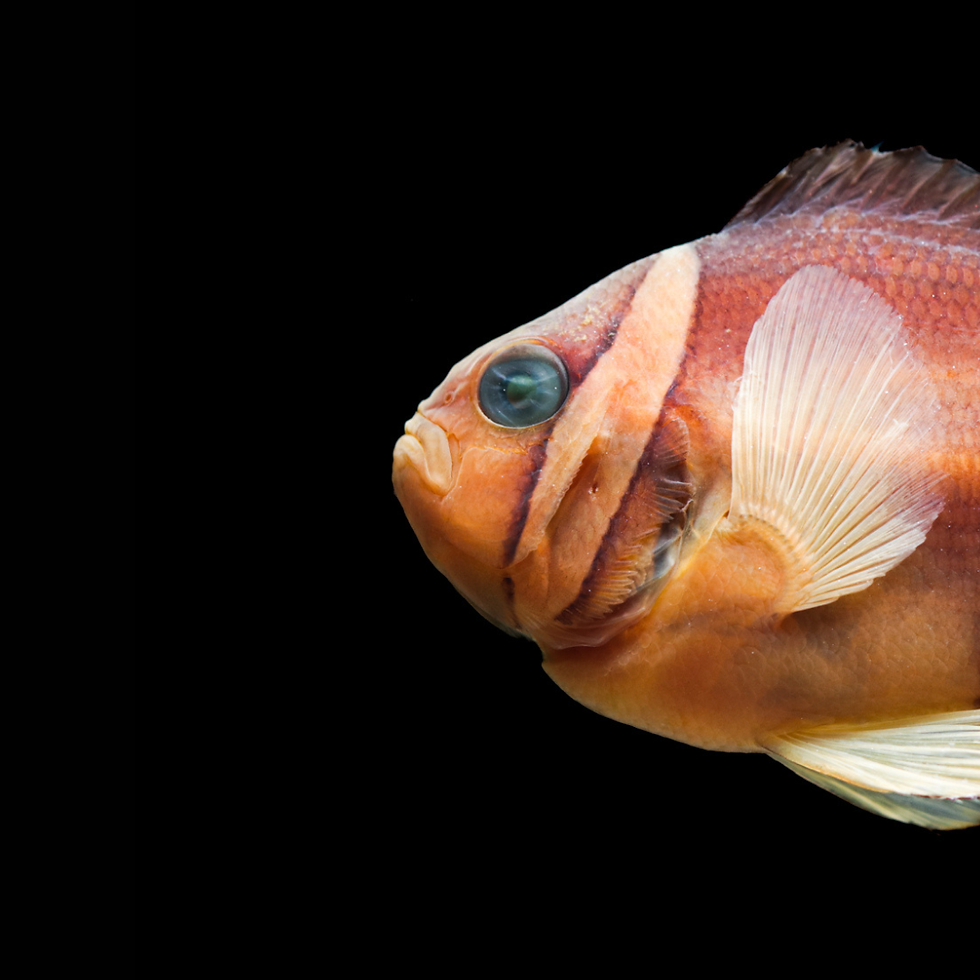Specimen Showcase | We Found “Nemo”🐠
- Hong Kong Biodiversity Museum

- Mar 10
- 3 min read
The Pixar animated movie “Finding Nemo” has become a classic that has given anemonefishes global recognition. Let’s see here if we can surprise you with a thing or two about these little marine fishes. As you will discover in this text, we gave a very different ending to the movie.

Anemonefish, also known as clownfish, include about 30 species with their majority belonging to the genus 𝘈𝘮𝘱𝘩𝘪𝘱𝘳𝘪𝘰𝘯. In Hong Kong, you are likely to observe the Clark's Anemonefish (also called yellowtail clownfish), 𝘈𝘮𝘱𝘩𝘪𝘱𝘳𝘪𝘰𝘯 𝘤𝘭𝘢𝘳𝘬𝘪𝘪 (Bennett, 1830) which is widely distributed within the Western Pacific and the Indian Ocean. The populations of those fishes, however, show distinct colouration in the function of their origin, ranging from yellow to brown. To spot and recognize this fish, you can thus use their markings, with two distinctive white bands located vertically behind the eye and at the base of the caudal fin, giving the impression that the body is separated into three distinct parts, while a third band may sometimes be visible above the anus.


Even with such distinctive features, 𝘈. 𝘤𝘭𝘢𝘳𝘬𝘪𝘪 can be difficult to see as this species hides within different species of sea anemones. This is definitely what makes this fish, and other related anemonefish, so special, as they hide and live within a sea creature that other animals prefer avoiding😲. Indeed 𝘈. 𝘤𝘭𝘢𝘳𝘬𝘪𝘪 and sea anemones form a mutualistic relationship, meaning that in their interaction, overall they benefit each other. What do they have to gain then? The sea anemone thanks to its numerous stinging tentacles provides shelter and protects the little fish from its predators. A thin layer of mucus covers the body of the anemonefish preventing it from being stung and thus making the anemone a safe organism to live with. In return, the anemonefish consumes the dead tissues and parasites found on the sea anemones, but also provides nutrients to the sea anemone simply by rejecting the product of its meals… defecating💩if you prefer. In addition, as 𝘈. 𝘤𝘭𝘢𝘳𝘬𝘪𝘪 is aggressive towards other species, it protects the sea anemones from some of its potential predators as well.

This protection is further enhanced as 𝘈. 𝘤𝘭𝘢𝘳𝘬𝘪𝘪 lives in a group of multiple individuals within a single sea anemone. In those groups, however, a clear hierarchy exists with a pair of dominant fishes composed of a female and a male, and a few other dominated individuals composed of non-breeding males and other juveniles. The hierarchy, however, will change over time as dominant individuals disappear, but maybe more surprisingly (except if you are a fervent reader of this page) the sex of the individuals as well. Indeed, 𝘈. 𝘤𝘭𝘢𝘳𝘬𝘪𝘪, like many other fish species, is a protandrous hermaphrodite👫. This simply means that all fish larvae grow as male but may become female in their lifetime if they reach a certain hierarchical status. At the top of the hierarchical pyramid (or sea anemone in this case) is the dominant female which is the largest individual of the group, and can sometimes harbour different colours (but not in all populations), while the breeding male is the second dominant individual in the group. When the female dies, the widowed male becomes female and leads the group. The non-breeding male with the largest size then becomes reproductive and breeds with the new female. So in a biological version of the Pixar movie, Nemo after losing his mom, should have seen his dad turning into a new mom🤭.
At the HKBM, our anemonefish does not have a name yet, so feel free to propose one in the comments below😄.
Text: Joyce Chan




Comments